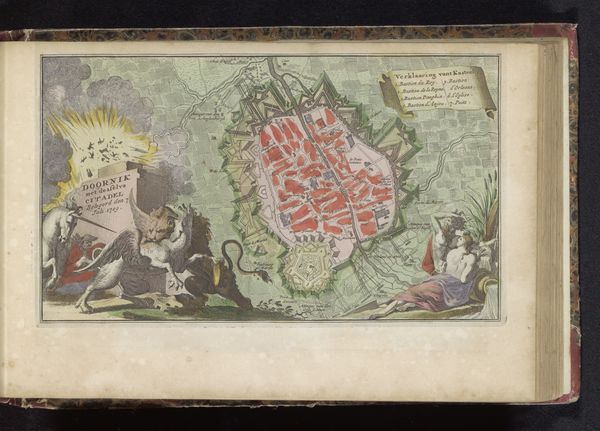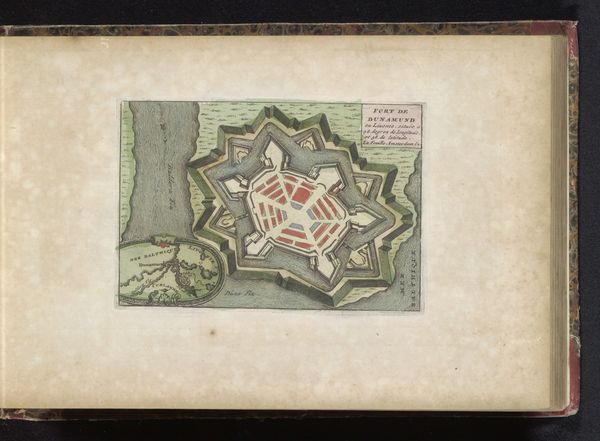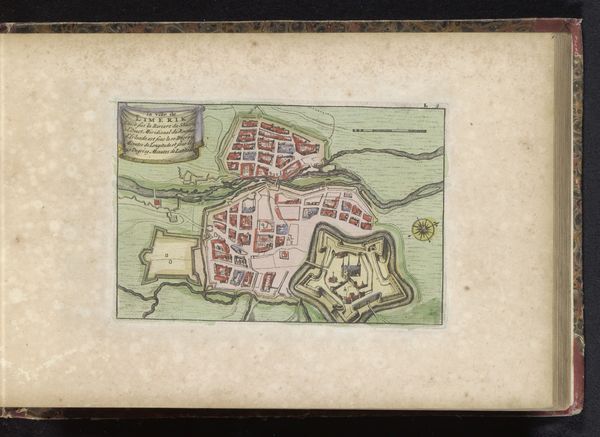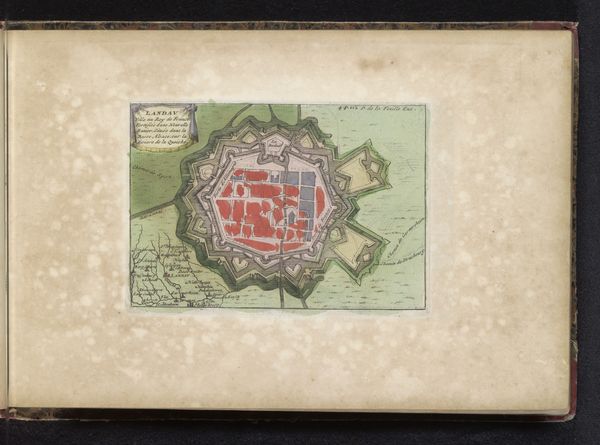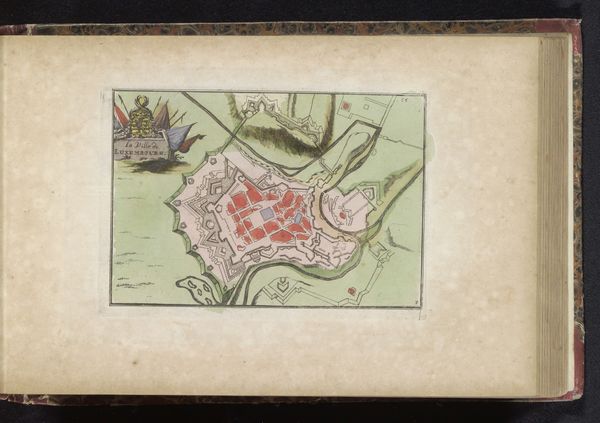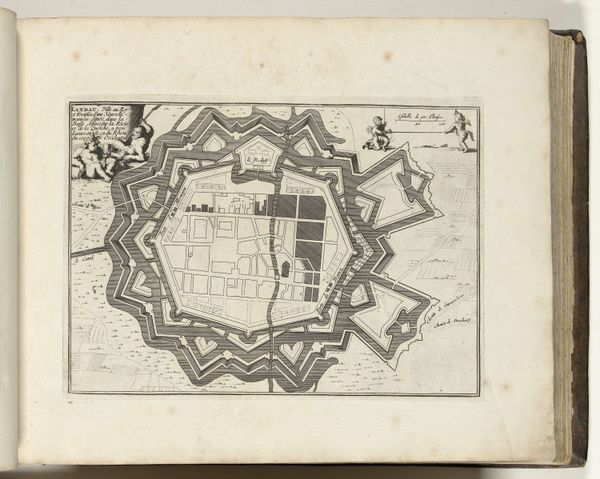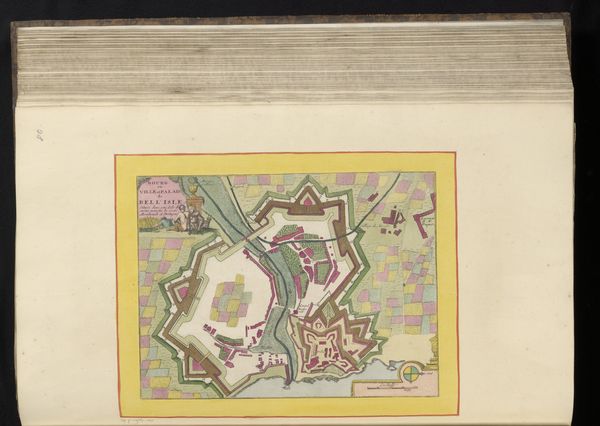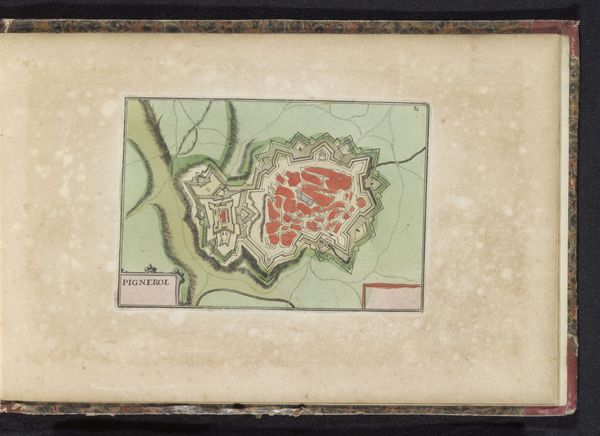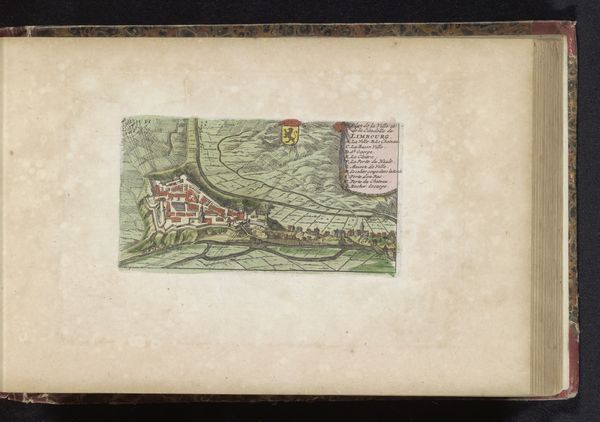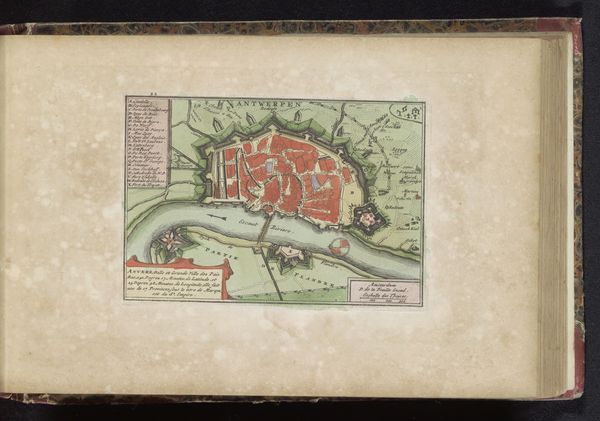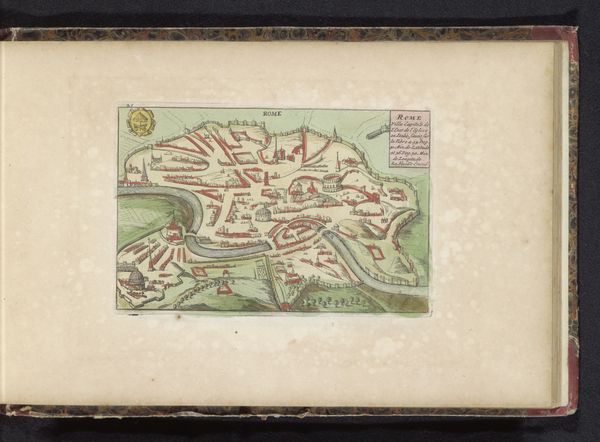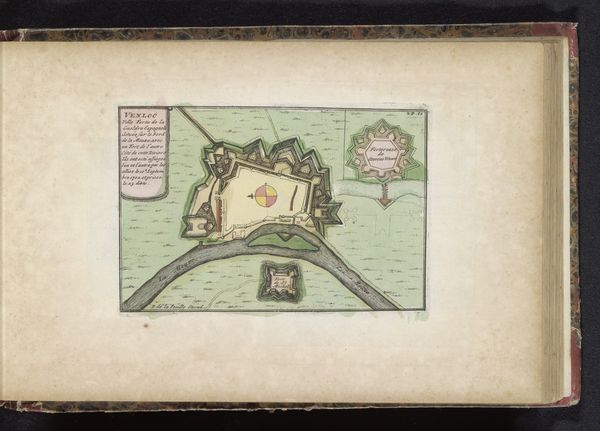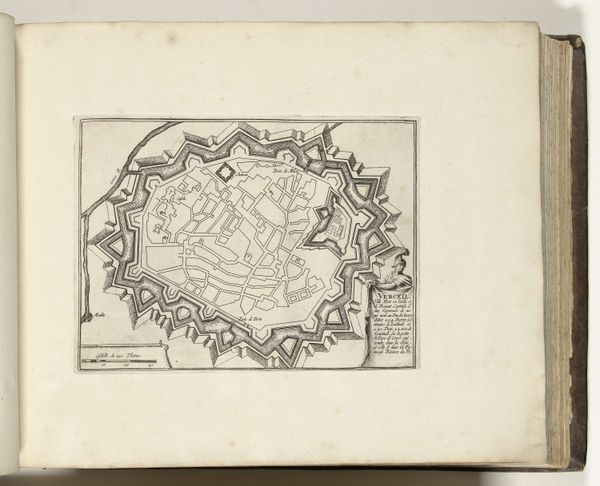
drawing, coloured-pencil, paper, watercolor
#
drawing
#
coloured-pencil
#
water colours
#
paper
#
watercolor
#
coloured pencil
#
cityscape
#
history-painting
Dimensions: height 146 mm, width 212 mm
Copyright: Rijks Museum: Open Domain
Curator: What a fascinating find! This is an early 18th-century plan of the town of Mirandola. Although the artist is anonymous, we know it dates back to around 1735, and it’s rendered in colored pencil and watercolor on paper. Editor: It's lovely! The pastel palette gives it a delicate air, but that rigid, star-shaped fortress hints at a more militaristic and politically charged past. The town appears held captive by geometry. Curator: Indeed. Mirandola’s shape, those sharply defined angles, speak to the evolution of military engineering in response to gunpowder warfare. The fortress is as much about controlling space as it is about defense. But for whom, and against whom? Those are always critical questions. Editor: The bird's-eye view, almost like a carefully constructed puzzle, suggests order and control. You've got these buildings clustered like symbolic blocks. I wonder what sort of social hierarchy is embedded within those lines? Are there markers for sacred spaces, markets, or spaces of civic importance? Curator: Absolutely. The numbered key to the left side provides insight. Several buildings are identified as churches dedicated to specific saints. Consider how that concentration of religious symbols might have served to solidify cultural identity in that particular region during this era. What would that visual presence have meant for the people of Mirandola? Editor: The walled shape stands out. I think back to cultural memory— the symbolism of walls throughout history— what are they trying to project and preserve inside while keeping dangers away? That division interests me! It almost feels as though Mirandola could be viewed as its own visual coat of arms. Curator: You’ve touched upon something crucial. Mirandola's placement on trade routes made it vulnerable. Viewing it in relation to other walled cities tells us so much about shifting powers and contested territories. It's essential to remember that this town was inhabited and fought over. It was shaped by forces larger than its neatly planned streets. Editor: Absolutely, the more you unravel the iconographical layers, the more this illustration comes to life! What initially struck me as quaint becomes deeply symbolic. Curator: Precisely! Approaching historical artwork such as this one with open minds and an eye towards the power dynamics encoded in its representation gives us deeper insight into our shared history.
Comments
No comments
Be the first to comment and join the conversation on the ultimate creative platform.
